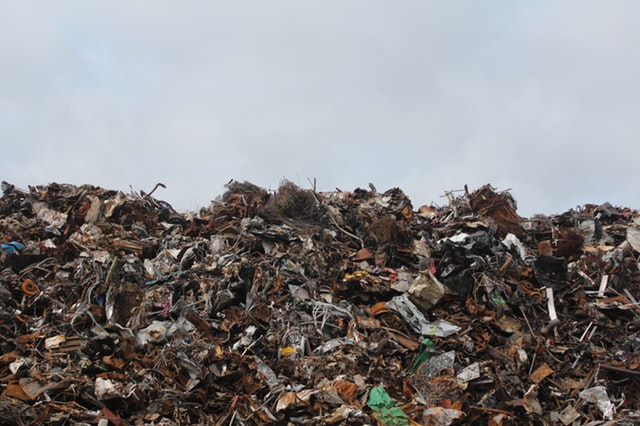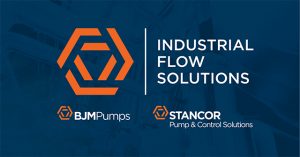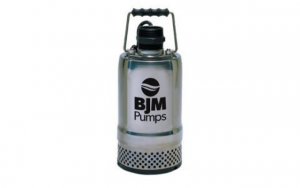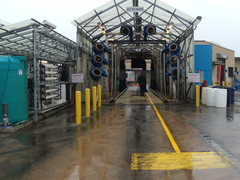Authors: Jonathan Herlong, Sales Engineer, Tencarva Machinery; and Steve
Mosley, Regional Manager, BJM Pumps
Federal standards exist to protect groundwater by requiring some landfills to use plastic liners to collect and treat leachate. Leachate, which is the resulting liquid that drains or ‘leaches’ through a landfill after it rains, can vary widely in composition; depending on the age of the landfill and the type of waste the landfill may contain. When a new wastewater treatment facility was being built right next to an existing landfill, the specifying engineers had to consider how leachate entering their pumping processes might affect the safety of the plant personnel and the pumping equipment.
While the specifying engineers at the consulting design firm were reviewing the requirements of one 15-foot deep sump inside the wastewater treatment plant, they determined that the process required:
- Pumps with explosion-proof motors. This indoor sump was classified as a potentially hazardous area because of the gases that could result from the combination of fluids entering the wastewater sump. Explosion proof zones are defined in areas where flammable gas has the potential to be ignited by the arc of an electrical device (such as a pump motor).
- Pumps that can handle acidic fluid, as the sump would be collecting unscreened building wash-down water, membrane bioreactor (MBR) permeate, cooling tower blowdown, and dewatering press filtrate. In addition to creating a potentially explosive atmosphere, this combination of wastewater could create an acidic solution with low PH levels, which can corrode standard cast iron submersible pumps.
- Pumps capable of passing rigid solids about 0.5” in size and spherical in shape. The leachate entering the wastewater sump was estimated to contain up to 10,000 mg/L of solid materials.
- Pumps sized to produce 600 GPM (gallons per minute) at 78’ TDH (total dynamic head).
After the specs were fully defined, the consulting design firm chose to work with Tencarva Machinery, a company that supplies a range of rotating process equipment to industrial and municipal operations throughout the Southeastern United States. The engineers at Tencarva Machinery reviewed the pump specs and recommended an explosion-proof pump from BJM Pumps. The explosion-proof XP-SKX Submersible Shredder Pumps were recommended because they are engineered with the following features:
1. The XP-SKX Submersible Shredder Pump has an FM Approved explosion-proof motor for use in Class I, Division 1, Groups C & D hazardous locations. FM Approval certifies that the submersible pump motor is a) spark-free; b) has no source of sparking inside the motor that can cause ignition; and c) that in the case where ignitable gases might enter the inside of the motor housing, the design of the pump motor has the capacity to extinguish the flame from that ignition before the flame can exit the vessel (i.e. the vessel is capable of containing the pressure generated by an internal explosion, thereby keeping plant personnel safe).
2. The XP-SKX is manufactured from corrosion-resistant stainless steel. All the pump end components are made of 316 Stainless Steel, including all wear and wet parts – impeller, wear-plate, seal chamber, and pump volute. The elastomers, such as o-rings, lip seals, and gaskets, are made of chemically-resistant FKM. The motor is treated with an epoxy coating which has been proven to hold up in aggressive chemical environments. With the right metallurgy and durable construction, the XP-SKX would be ideal for pumping this particular process waste.
3. The XP-SKX is engineered to shred solids. The SKX has been proven to cut and pass solids up to 3.5 inches in size. Specifically designed for industrial shredding applications, the XP-SKX uses an engineered Tungsten Carbide Tip Fang™ impeller to cut against a spiral-shaped diffuser plate and continuously rip apart solids with 360-degree shredding action.
4. The XP-SKX has “Three Seal Motor Protection”. The motor is protected with an oil-lubricated double seal design whereby the double mechanical seals are comprised of a lower seal made of silicon carbide/silicon carbide and upper seal faces made of carbon/ceramic. An additional lip seal is installed above the impeller to help prevent abrasives from entering into the seal chamber. Seal leakage detectors are installed in the seal chamber and offers early warning should water enter the chamber. The XP-SKX has an air filled motor with winding protection and (NEMA) Class F motor insulation, allowing the motor temperature to rise to 221°F before an automatic switch turns the pump motor off (if the temperature and/or amp draw raises too high). When the motor cools, the switch is designed to automatically reset and the pump will once again begin operating. Since the fluid temperatures were estimated to range between 50°F – 90°F, this would be a ‘non-issue’ for the XP-SKX pumps.
With the assurances provided by the consulting firm, the owners of the brand new wastewater treatment facility approved the purchase of the BJM Pumps. In April 2017, two explosion-proof XP-SKX150CSS-460T Submersible Shredder Pumps were installed in the indoor sump. BJM Pumps provided the guide rail system that enabled the installation team to easily install both pumps, which are run off level control. “The BJM Pumps are set up to run in an alternating lead-lag configuration, to prolong pump life and be able to accommodate possible higher inflows into the sump,” explains Jonathan Herlong, Sales Engineer at Tencarva. “We went out to check on these pumps in December and they’re working great.”
There is no question that managing safety is a necessity for many industries. The implementation of explosion proof zones on the job site has created a need for explosion proof pumping equipment and consulting engineers who must know what proven technology is available to the market.




